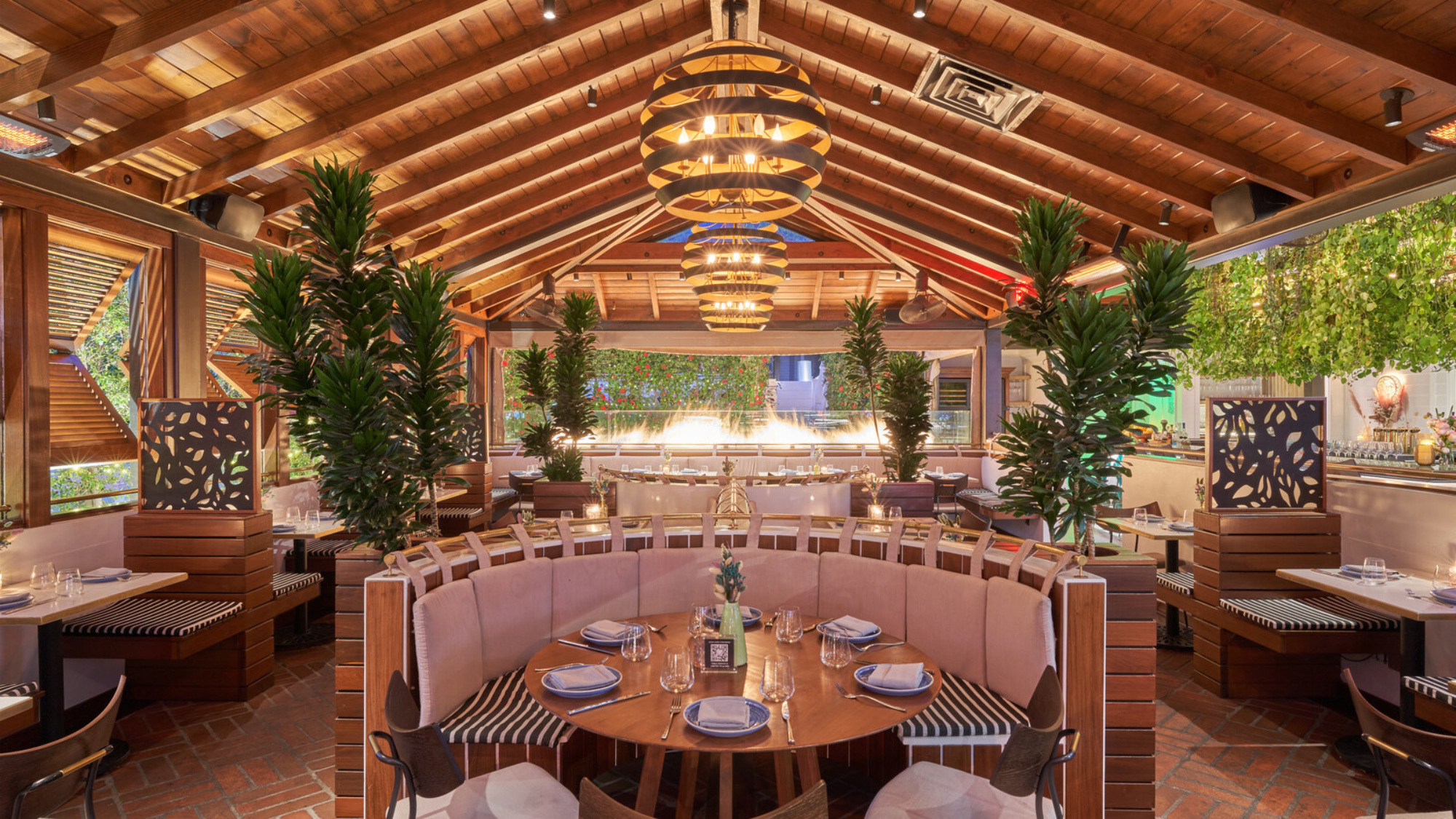
Conservatory Is Making Zero-Waste a Reality. Here’s How, in Five Dishes
West Hollywood’s Conservatory is a distinctly different restaurant today than when it opened in 2018.
Originally positioned as a magnet for the neighborhood on one of Santa Monica Boulevard’s most conspicuously charming corners, its initial offerings spanned the casual gamut, bridging burgers, continental bistro eats, finicky cocktails and — from a small café space that long housed the legendary Irv’s Burgers — coffee and breakfast burritos.
But over the last 16 months, Conservatory has quietly flourished into one of L.A.’s boldest restaurants, as well as one of its most conscientious, employing sustainable techniques of Byzantine complexity on its still-approachable menu. The transporting garden patio and its high-slatted, open-walled dining pergola, however, remain largely untouched, and as charming as ever.
The force behind Conservatory’s gradient transformation is mostly obscured in the kitchen, in the form of chef Victor Muñoz. Guadalajara-born and Orlando-raised, Muñoz brings years of experience working in fine-dining institutions like Le Bernardin, Eleven Madison Park, Noma, and Pujol, as well as in considerable time under nouvelle cuisine deity Paul Bocuse.
While fanatically pursuing a zero-waste pledge and committing to prep work that seems humanly impossible given the hours in a day, Muñoz says he designs recipes from a place of nostalgia, mingling his sense memories with his travels and work experience. “I honestly, wholeheartedly, believe everything that I put on a plate comes from my experiences,” Muñoz says. “Even if a person has no idea who I am, if you eat my food, you will get to know me.”
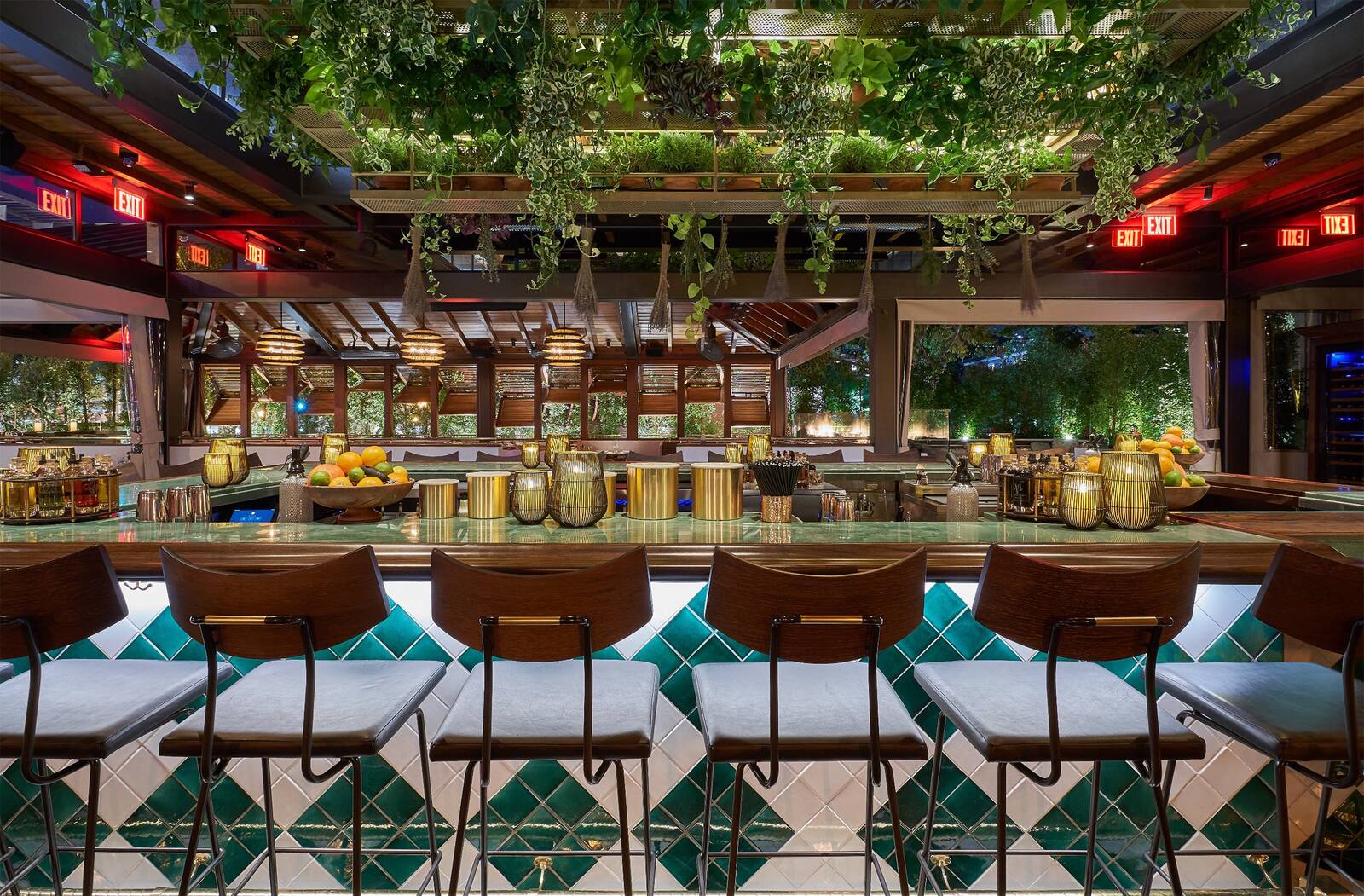
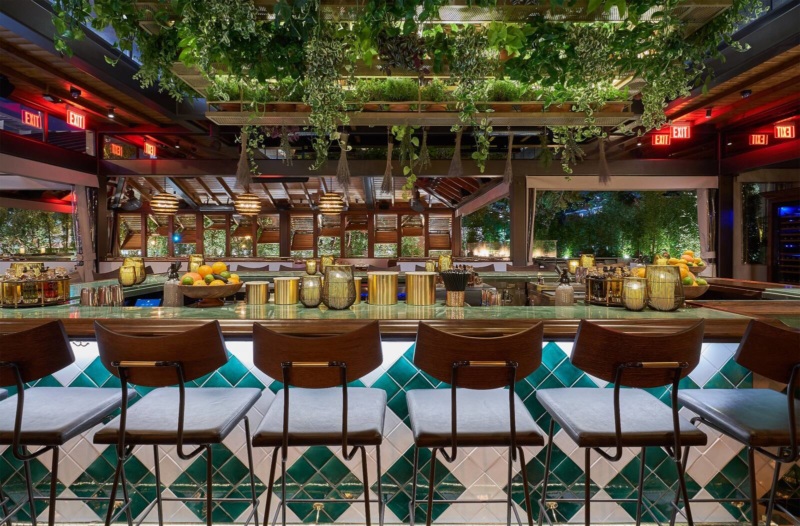
It was after staging at Pujol in Mexico City that Muñoz started running with chef-owner Enrique Olvera’s adventures with a “madre mole,” or mother mole, in which the kitchen laboriously keeps the same mole negro alive over the course of months, indefinitely aging it to witness how its taste and texture evolves over time.
Muñoz has added a twist to his own mole, propelled by his inclination for experimentation and hyper-focus on seasonality. He continuously incorporates compatible ingredients at their peak, such as Fuji persimmons, kumquats, and mulled figs in fall, or strawberries and peaches for summer — always with the goal of deepening the mole’s complexity and shining a light on local food producers. “We cut out the middleman and empower our farmers, gatherers, and fishermen, who love what they do as much as I love cooking,” he says.
Muñoz’s commitment to sustainability and zero-waste cooking finds the already technique-driven kitchen dehydrating and zesting mango pits to make flour, turning tuna guts into fish fumet, and manipulating koji-marinated banana peels into edible leather, sparing no process to stretch the utility of each ingredient. Here, an inside look at how Muñoz uses those ingredients to create five of his favorite dishes at Conservatory, in his own words.
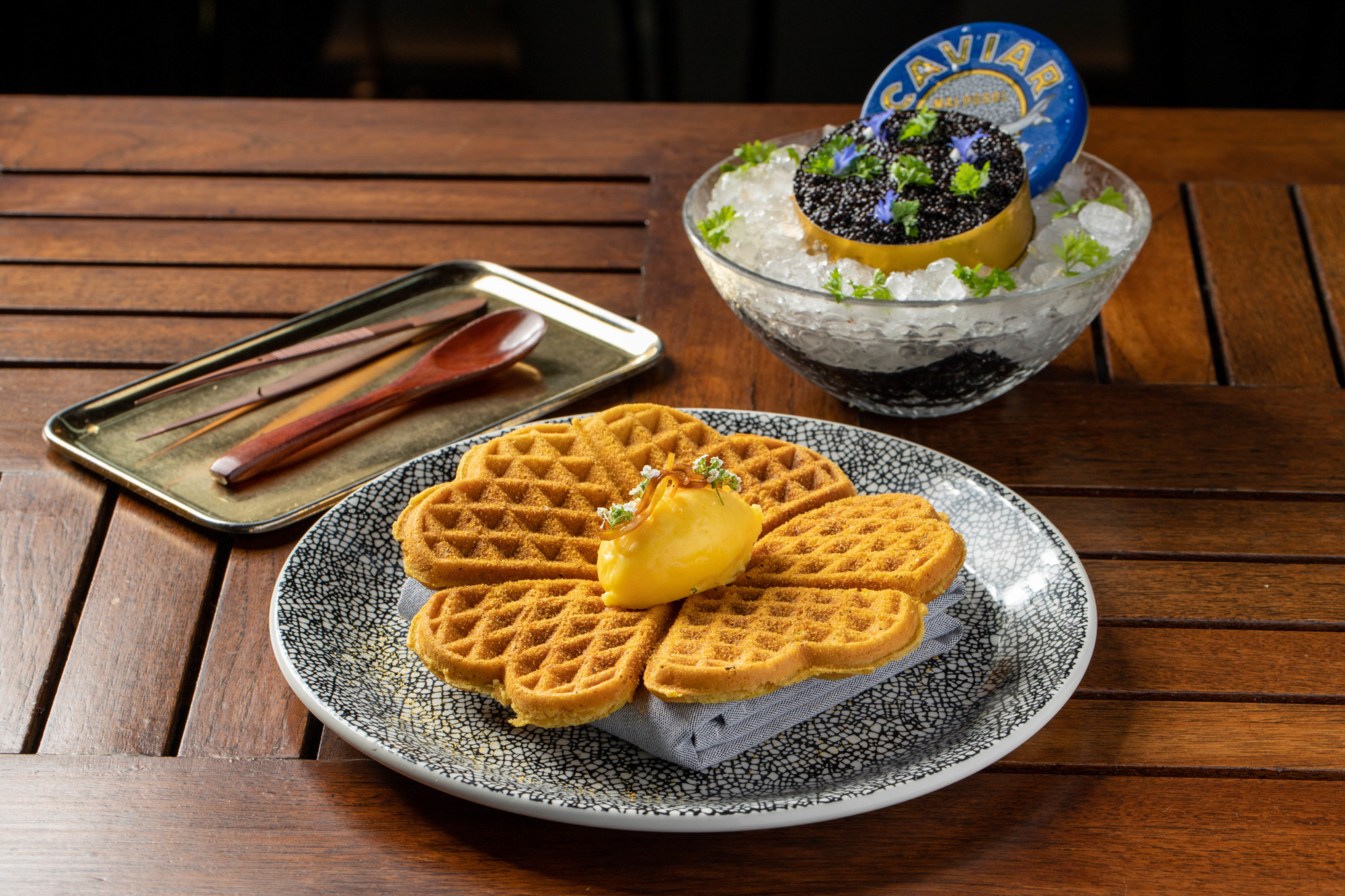
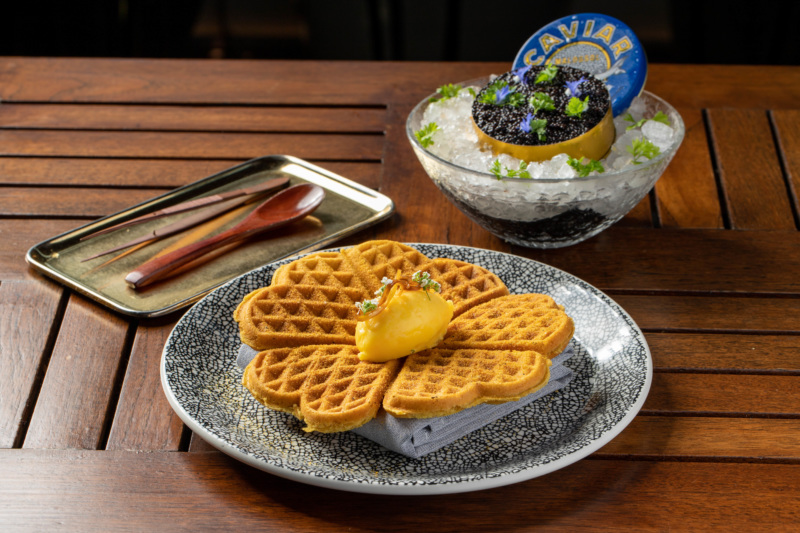
1. Bananas & Caviar
“I grew up eating mofongo, a dish of plantains, fried with bacalao (dried and salted codfish), with my Cuban and Puerto Rican friends in South Florida. I come from a Mexican background and that was different to me. I really wanted to do a caviar service for the restaurant but didn’t want to do something traditional with the accouterments like egg and chives. I thought back to this Puerto Rican restaurant’s mofongo in Orlando and thought, ‘why not pair the caviar with plantains?’ It’s savory, it’s sweet, it’s acidic, and the caviar is buttery, with great salinity. It’s one of those trial-and-error dishes you play around with until you get it right.
And we’re not wasting any part of the banana. The peels are marinated in koji and candied into a banana leather, the leaves are turned into banana oil, the banana meat gets tossed in its own vinaigrette, we make a banana peel butter, then we make the wheat waffle out of just the ends of the bananas. It’s one of those things that if you’re Caribbean, whether or not you’ve had bananas and caviar, you go back to your childhood eating tostones, eating mofongo with bacalao. It gives you that nostalgic feel.”

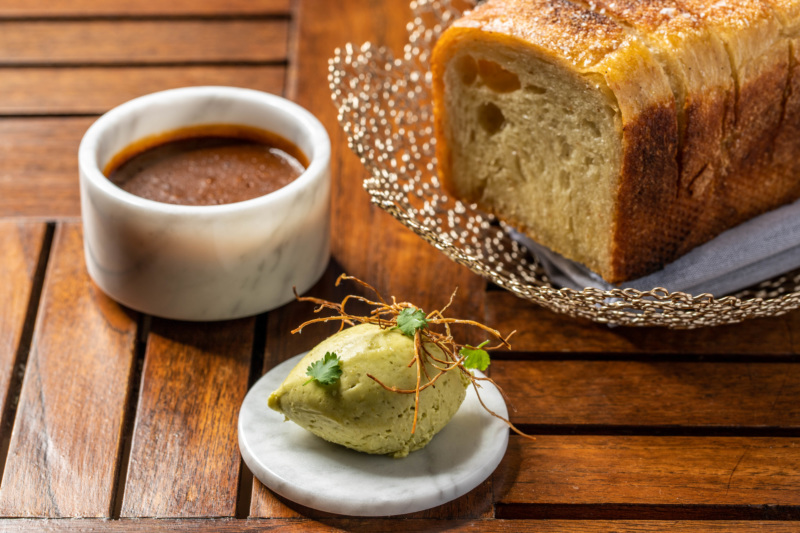
2. Pan & Mole
“Our madre mole is a living, evolving organism: A sauce that we age and prevent from going bad that’s continually changing and adapting to the seasons and in-season produce. It’s always going to give you a different experience based on the time of day you’re going to try it. Mole is something that I grew up eating. I feel like it’s a sauce that truly represents the complexity of Mexican cuisine.
We wanted to make the summer mole more playful than fall’s. Trying certain fruits to see what works, we found Regier Family Farms’ peaches and Harry’s Berries’ Fraises Des Bois. You think, ‘that can’t taste like mole, there’s no way.’ But it gives you an amazing sauce without acidizing it, without taking away its authenticity. It’s different, a lot more complex, but you still taste the mole negro. You can have a Mexican person come in who grew up on mole and they’ll say, ‘Oh wow, that’s amazing.’ Then you tell them, it’s made of peaches and strawberries, and they’re like ‘Whoa, what’s going on?’”
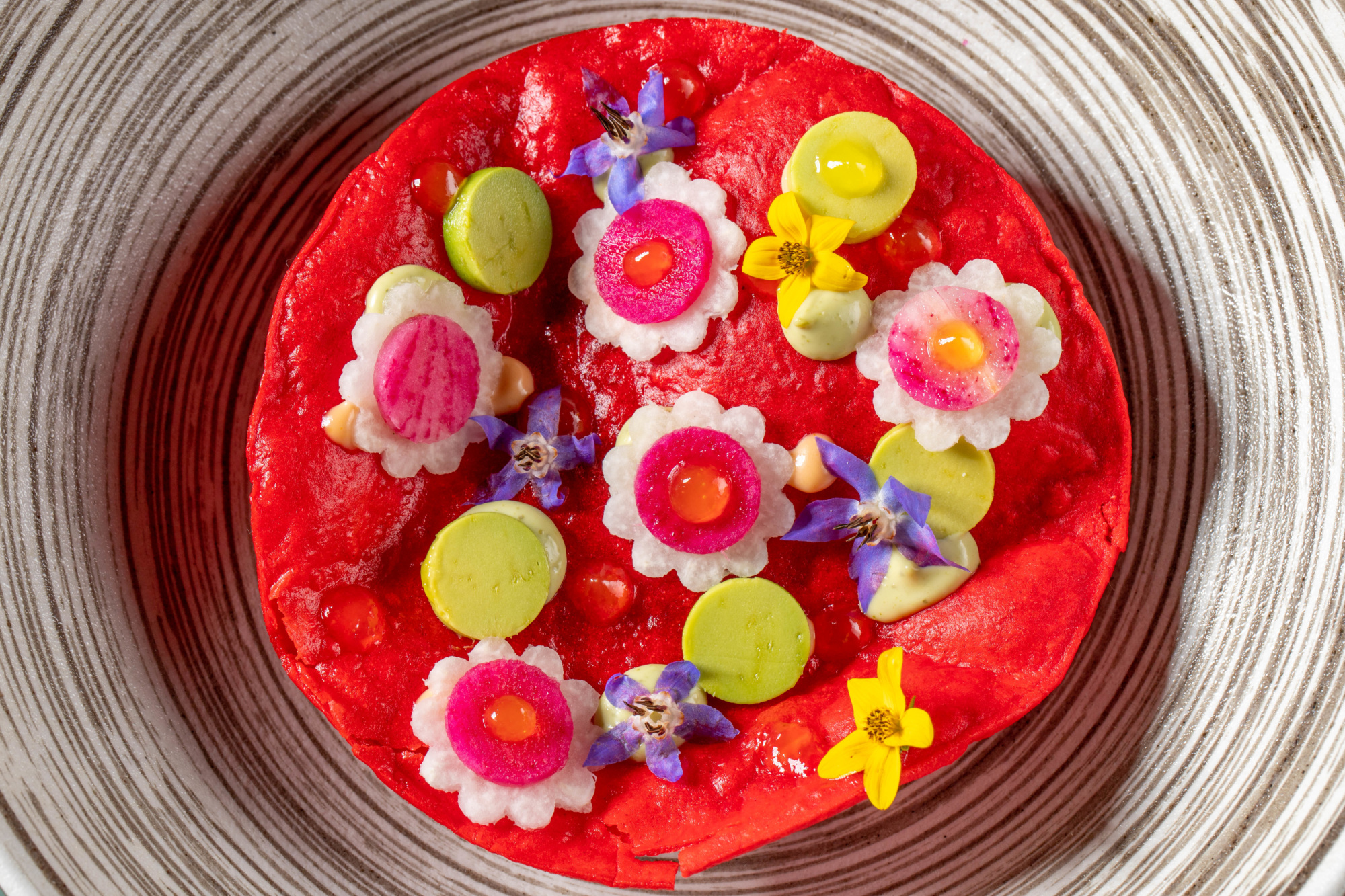
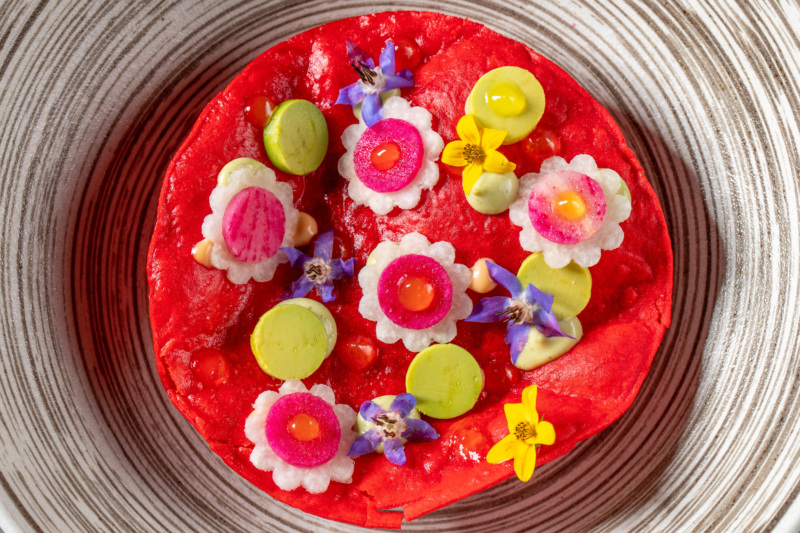
3. Yellowfin Tostada
“This is one of those dishes I took away from my time at Le Bernardin, the way that Eric Ripert works with fish and pairs its flavors. There, we used bluefin tuna belly, o-toro, that we don’t serve here because it’s overfished. It was so complex, and I thought, ‘How can I recreate this memory and put it on a plate?’ We’re using farmed yellowfin, making sure it’s lean and not too fatty, and as sustainable as you’re going to get it. It’s one of the new projects Santa Monica Bay is doing, which helps us highlight something that is sometimes looked down upon. People think, ‘It’s farmed, it’s going to be bad.’ But it’s still great, it’s great for the ecosystem, it’s great for the environment.
We want to make sure the yellowfin is the star of the show, so we don’t really do much except toss it in a little shiro shoyu, yuzu for acidity, umeboshi for saltiness, and a fortified fish fumet — sort of our own dashi — made from all the fish trimmings: the eyes, guts, and bones. If you’ve ever been at a sushi restaurant and had fresh tuna with ponzu or tuna tataki, it takes you back there. We cover that with Red Indian corn from Temecula that is out of this world. It’s my take on a tostada, but upside-down.”

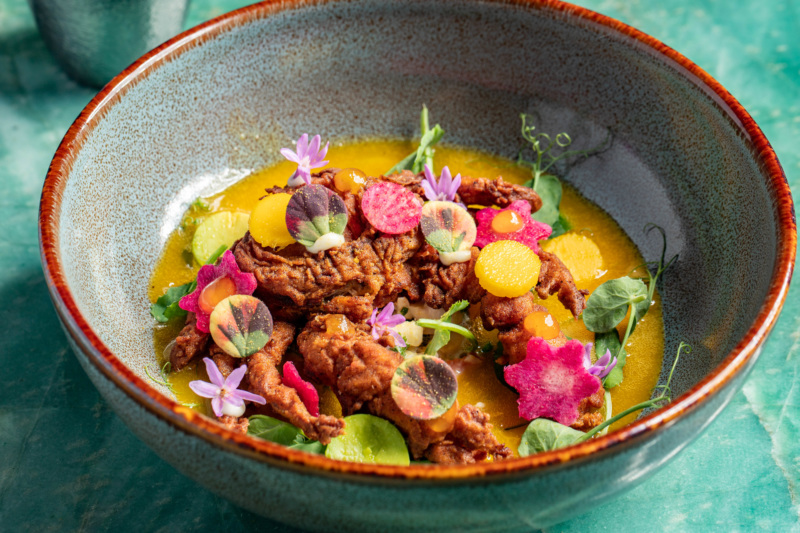
4. Soft Shell Crab Cake
“This comes from my travels in Thailand and our desire to emphasize the Valencia Pride mango from Wong Farms, which is sweet, with texture and acidity. I asked, ‘What goes well with mango?’ and thought back to my short stint working at Gaggan in Bangkok and how they work with crab and mangoes. I know that when our Thai community comes in, it reminds them of home. That’s what we were going for. We use everything from the mango. We dust the fried crab with mango sashimi that we make by dehydrating the pits for two weeks, Microplaning them, and folding that in with togarashi, topped with the mango peel that we candy. We also make a mango gel. And underneath, we hide a little bit of Dungeness crab, so you get two crabs.”
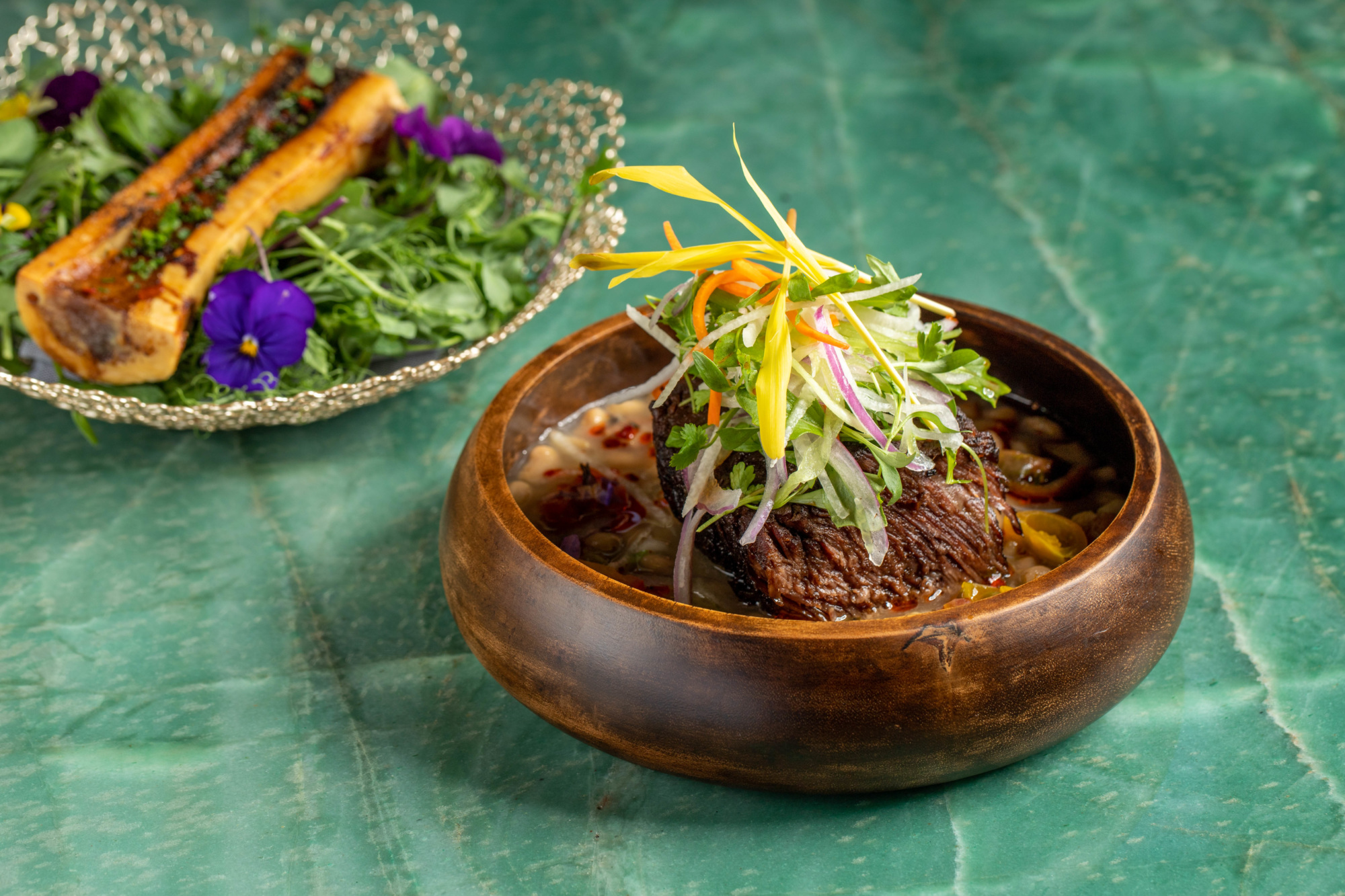
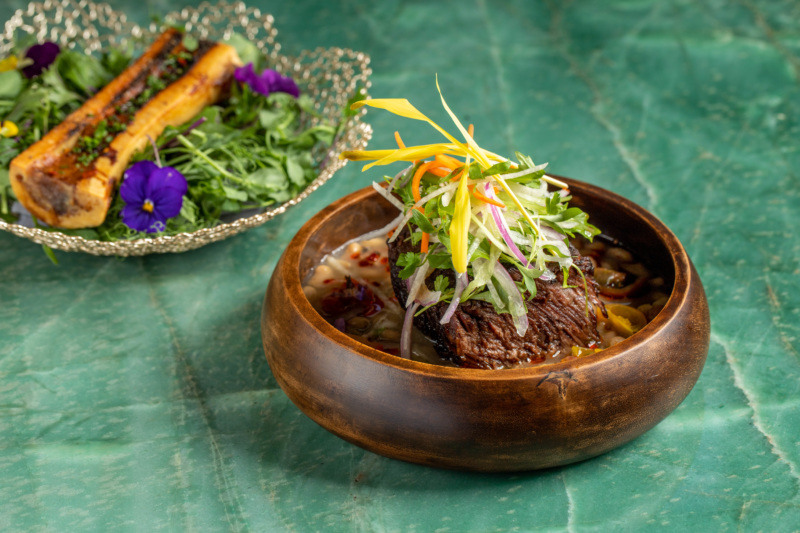
5. Short Rib con Frijoles
“Short rib is popular in the States. But the real showcase of this dish is meant to be the beans. Growing up, I would sit at the counter with my grandmother, with probably five to 10 pounds of beans, and I’d have to go one by one, separating them from the rocks and dust. I’m using Mayocoba beans, which are indigenous to Peru and also Tijuana, where they’re known as yellow Mexican beans. They’re super-buttery, they absorb whatever flavor you want, and have great viscosity. I make them in the way my grandma cooked them, with a two- to three-day braising process where they are soaked in epazote stock, cleaned, then cooked in another epazote stock, which gives this amazing minty, citrusy, oregano-like base. We then add a little bit of pork, Valdivia Farms tomato, a little cheese, and an epazote-cured bone marrow emulsion.
If you grew up in Mexico, you remember eating these beans, because you would have them with your carne asada tacos in Mexico City, Guadalajara, or Tijuana. We knew we needed a good partner for the meat, so we thought of Snake River Farms wagyu, which we braise the traditional way with Burgundy wine, mirepoix, fortified veal stock, and bone marrow. It’s served with tortillas, and I instruct the guests to make a taco out of it. It really takes me back to my childhood.”
Hadley Tomicki is an L.A.-based writer on food, travel and culture, and the co-founder of the James Beard Award-winning website L.A. Taco. Follow him on Instagram. Follow Resy, too.
























